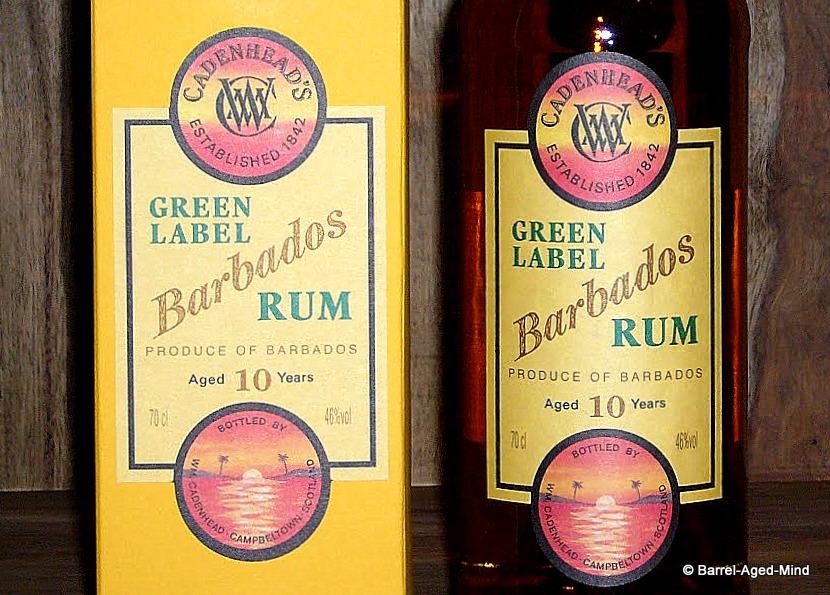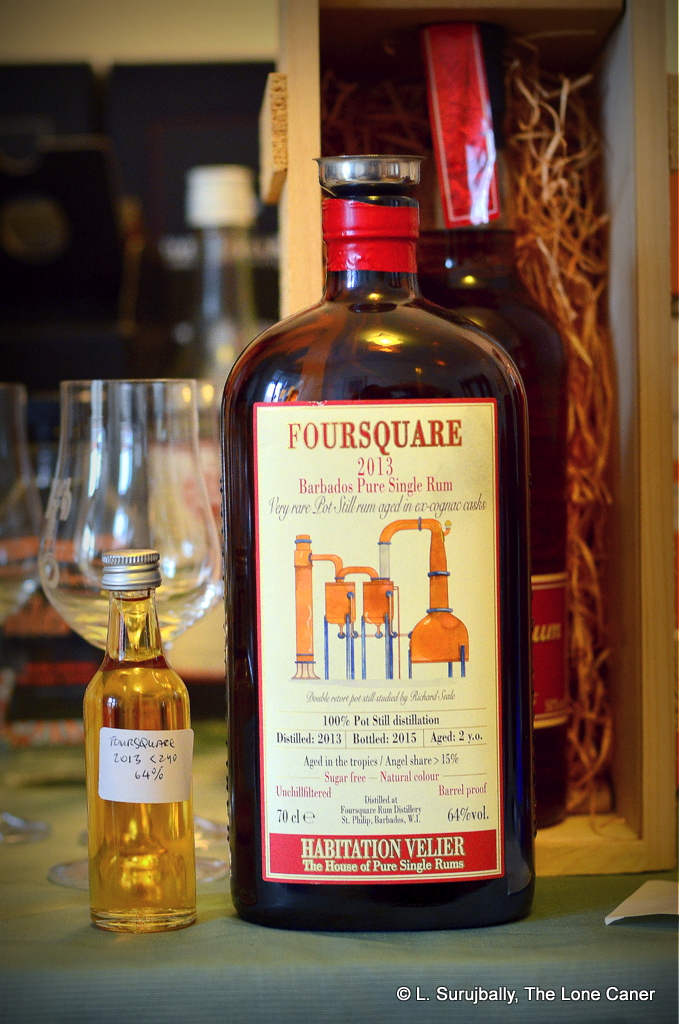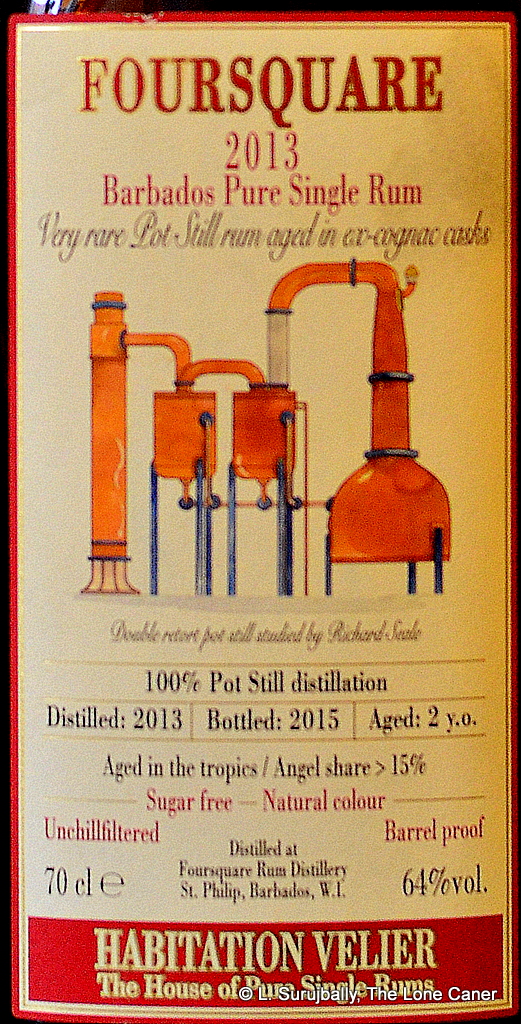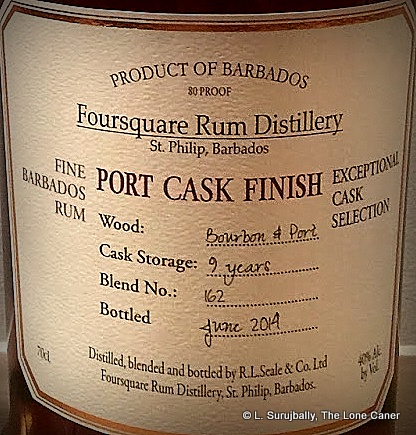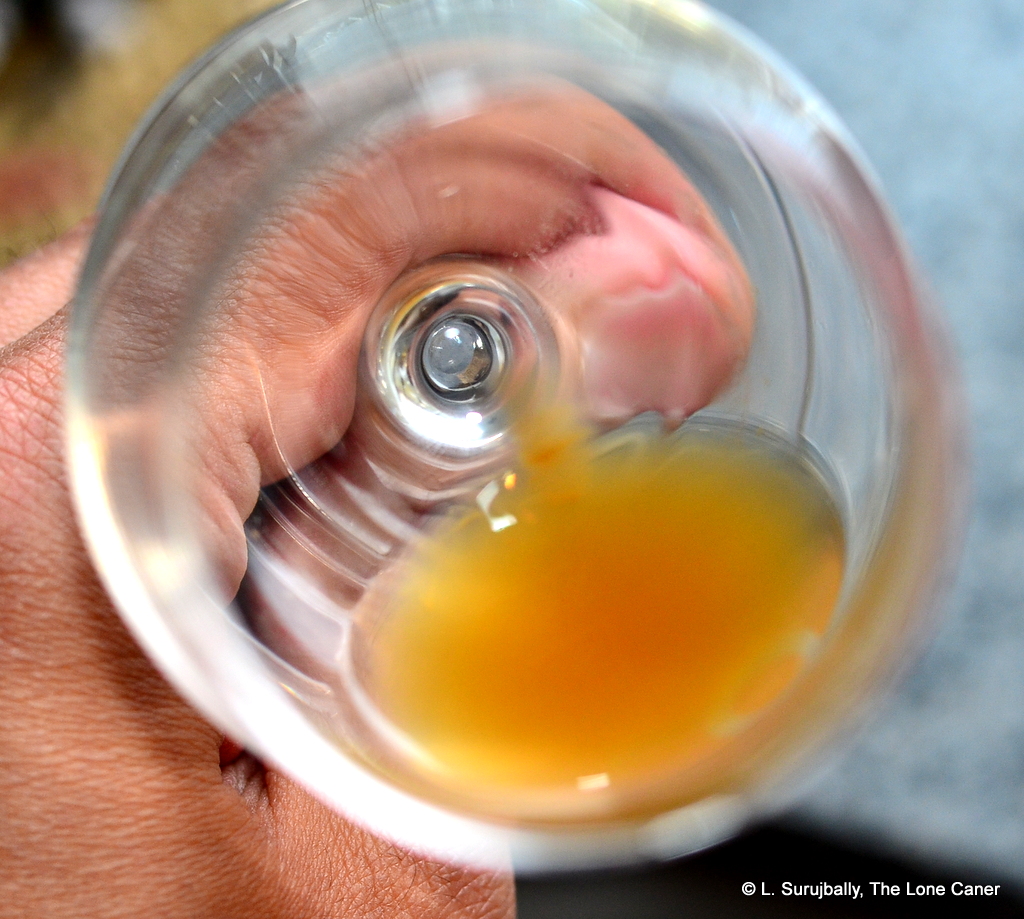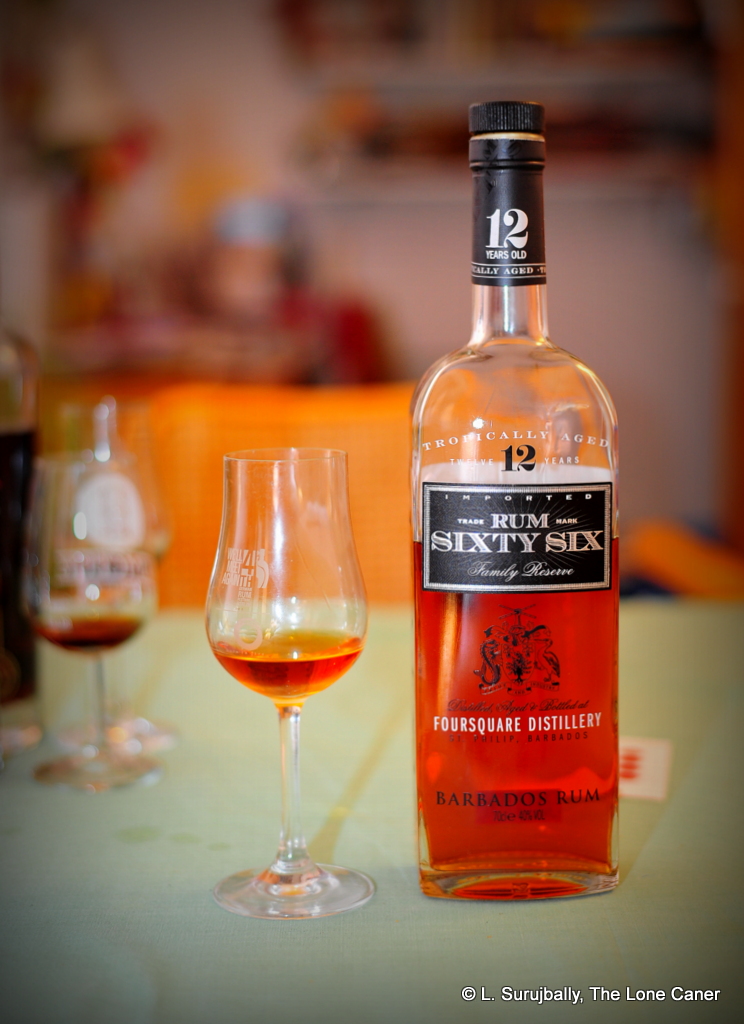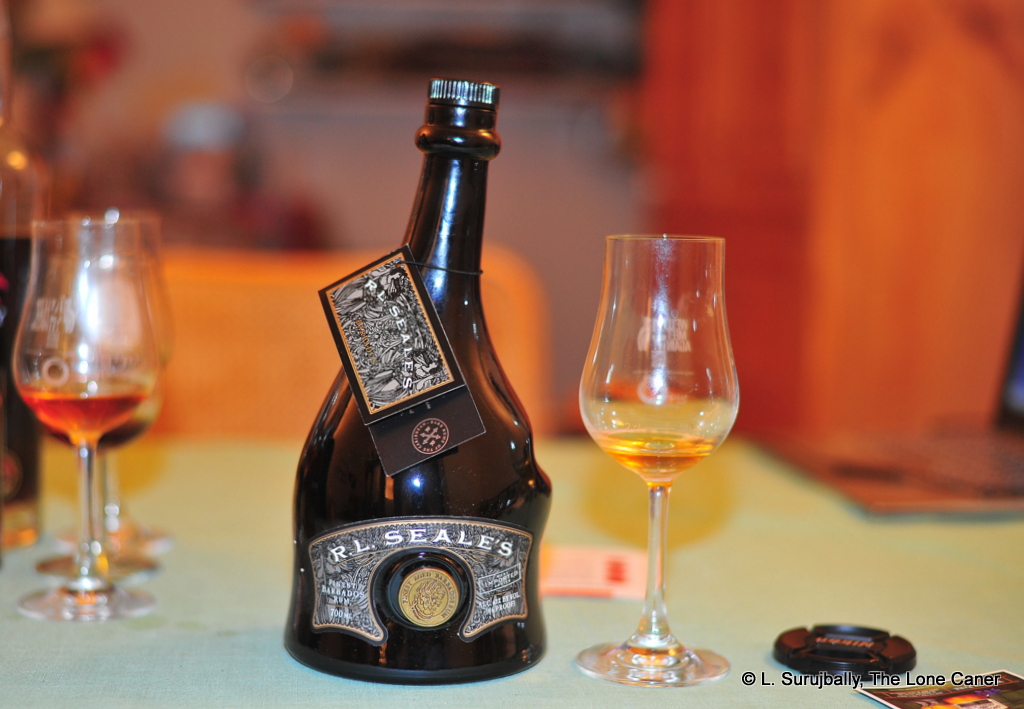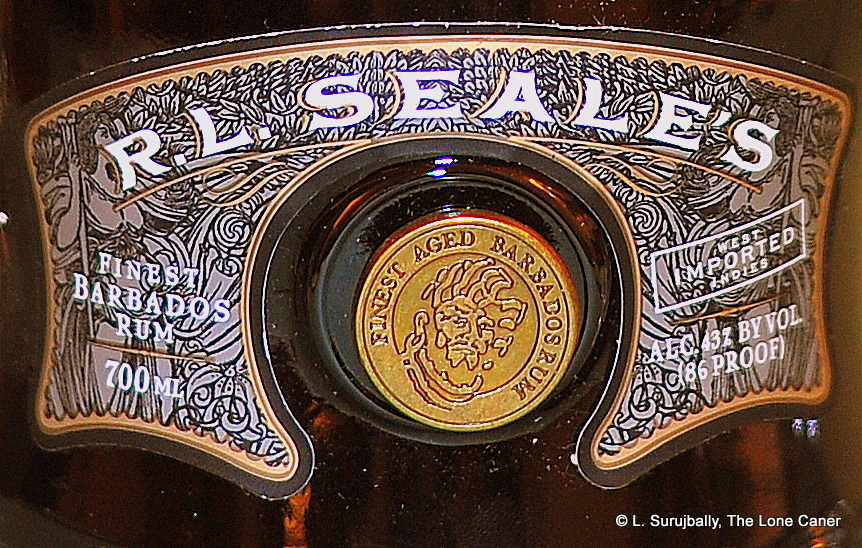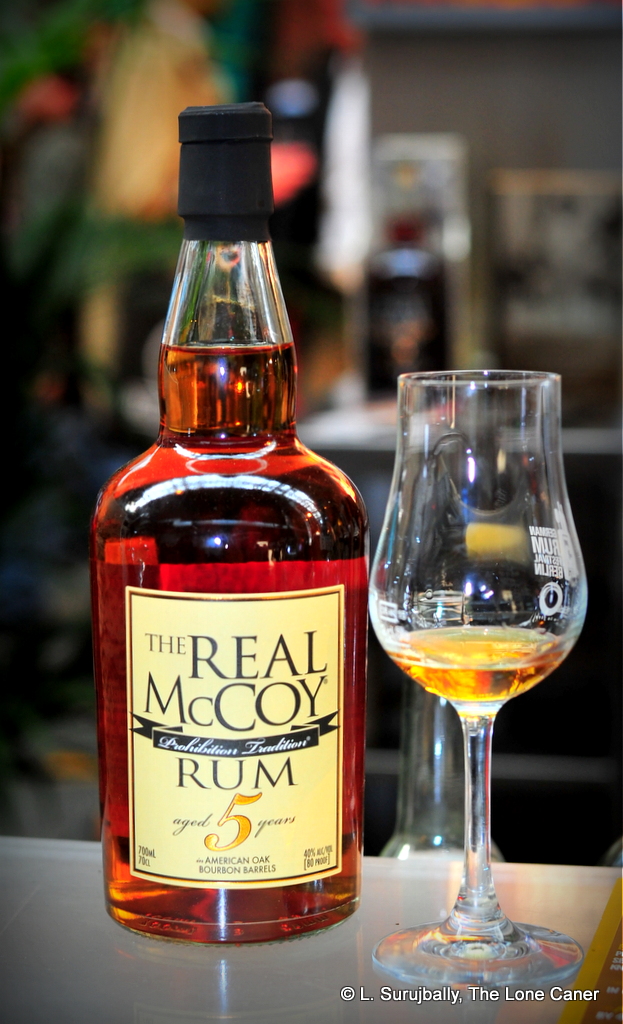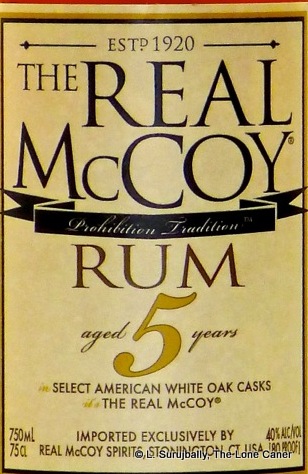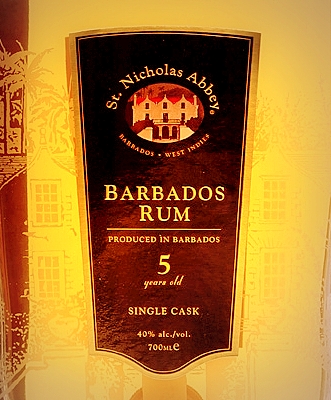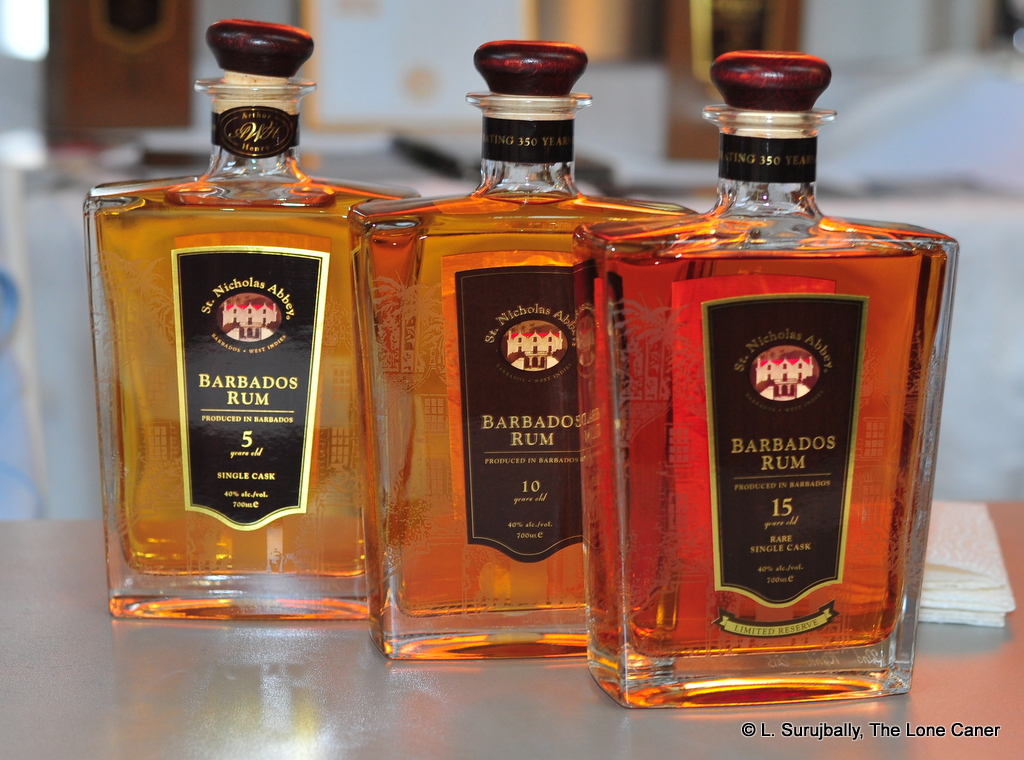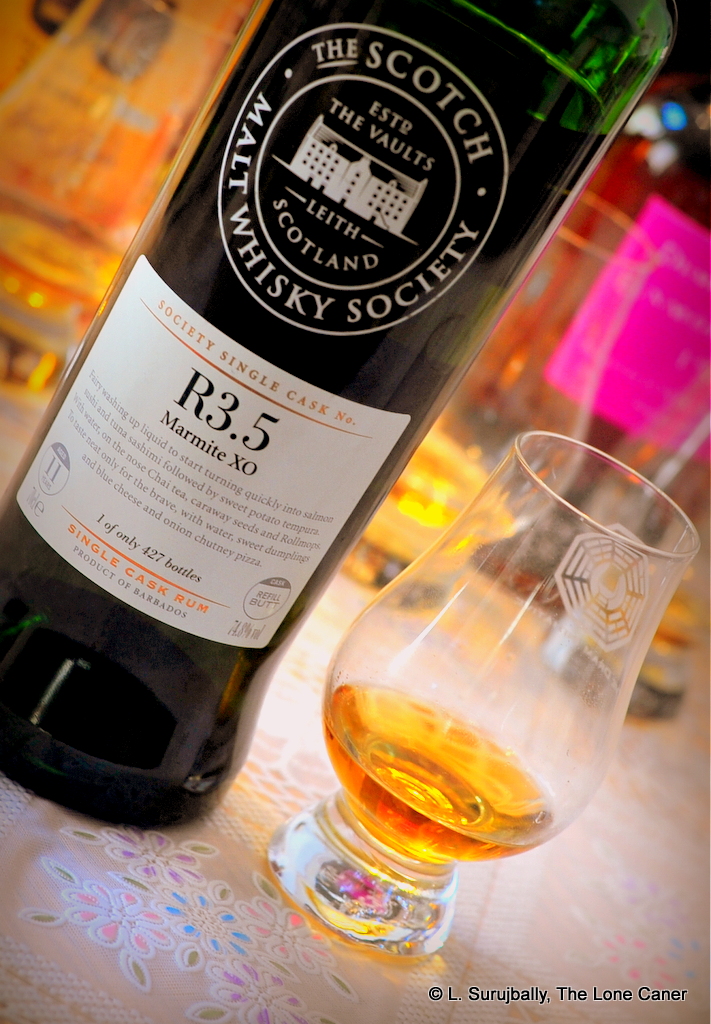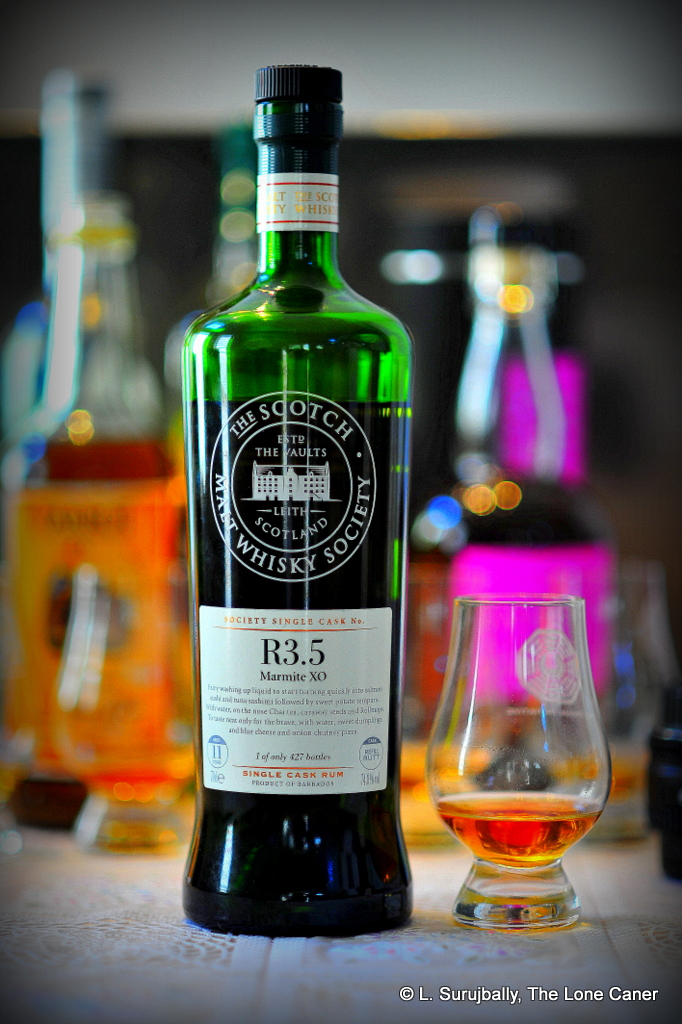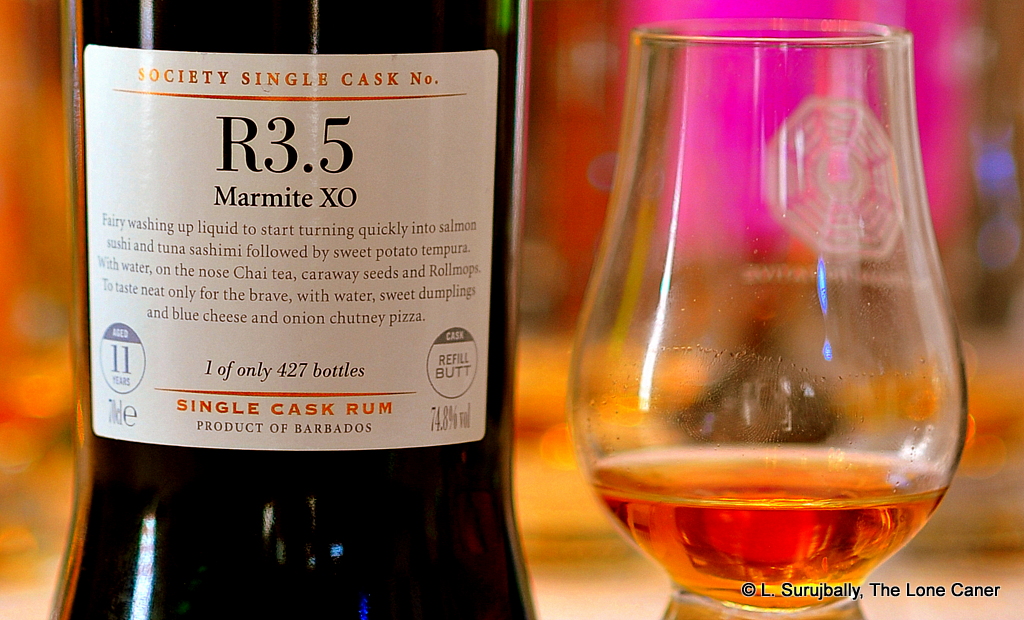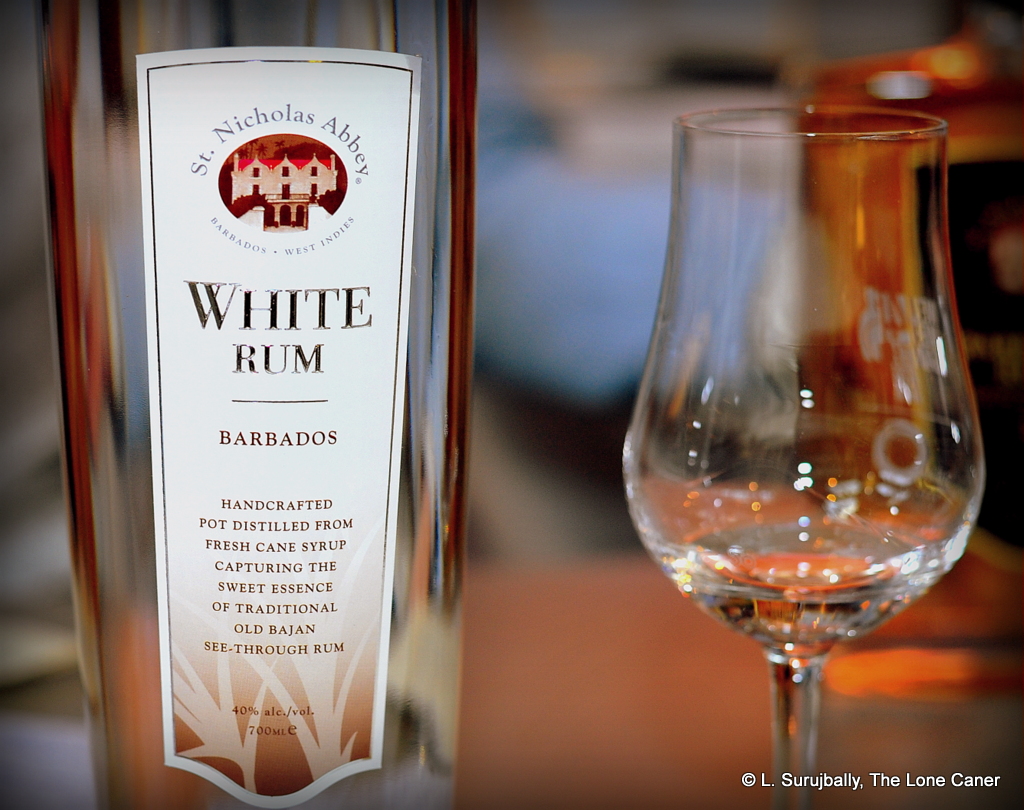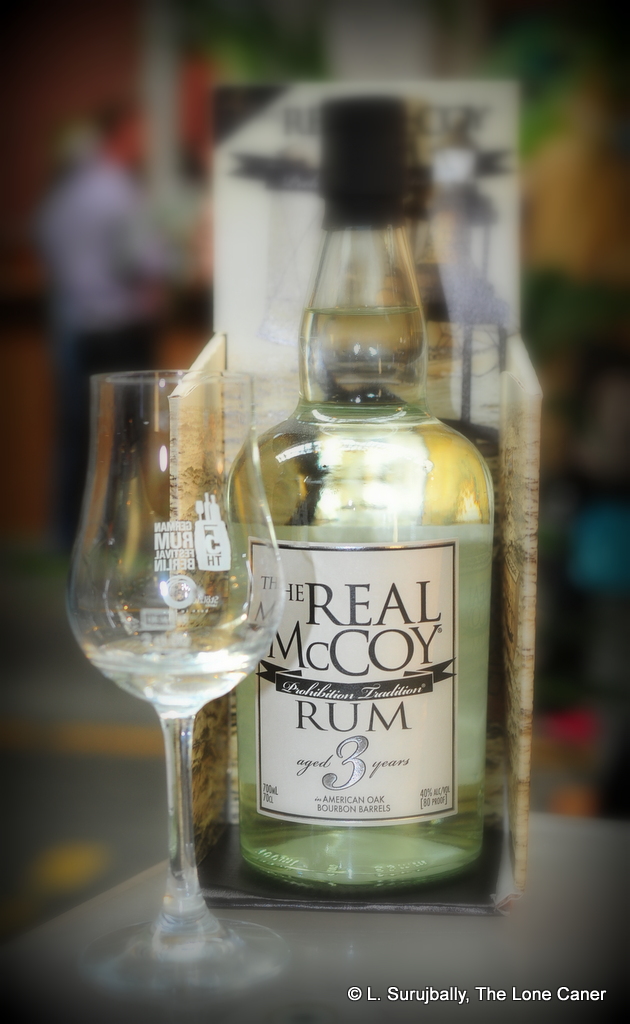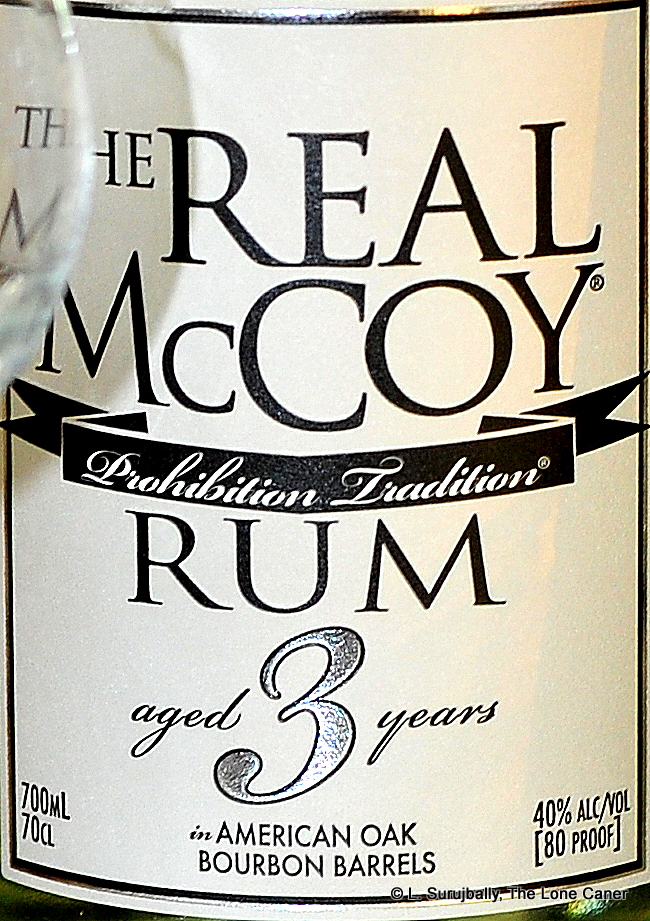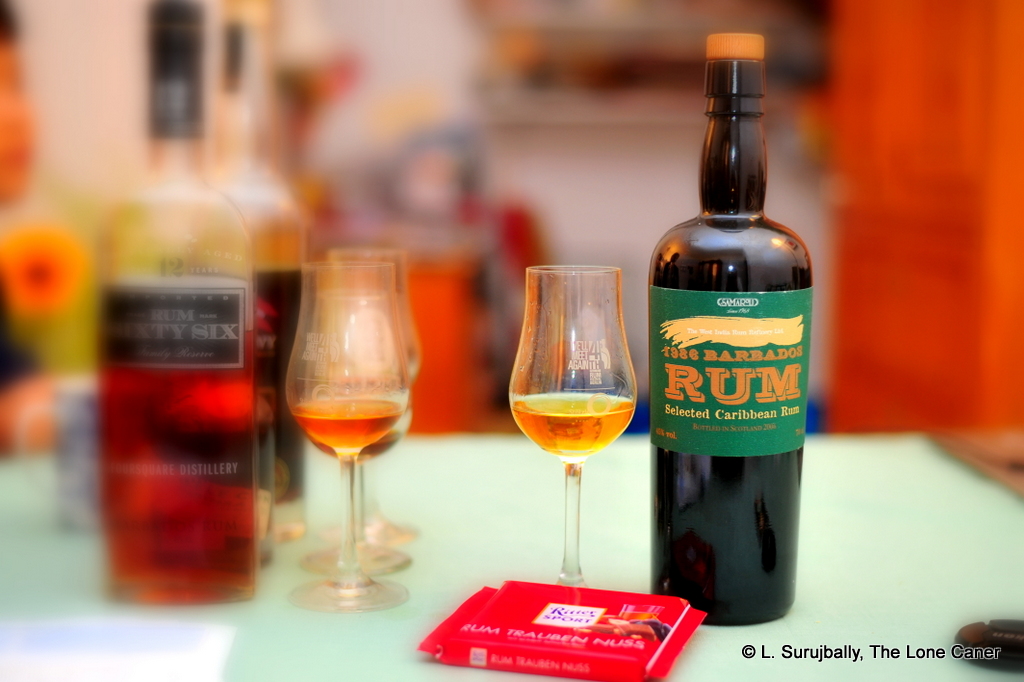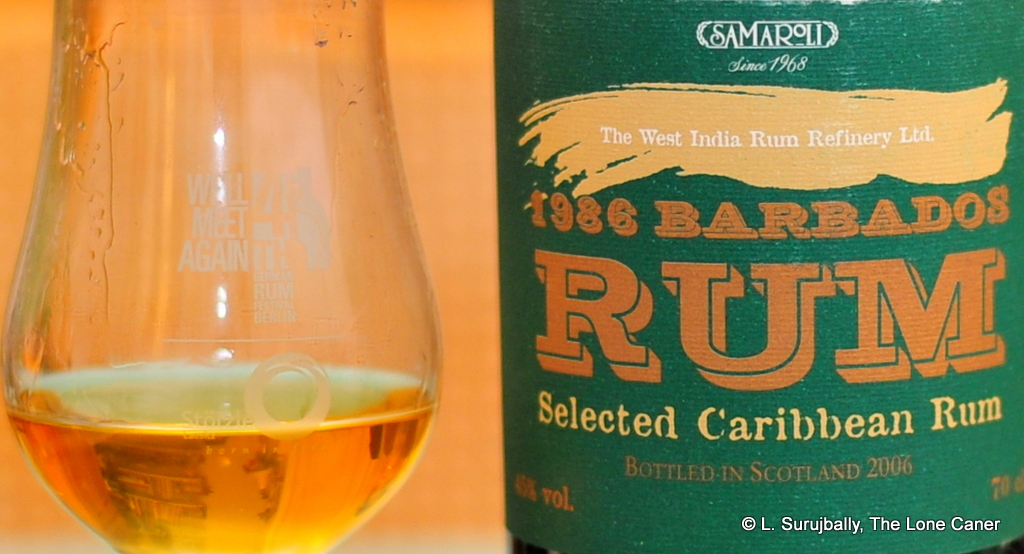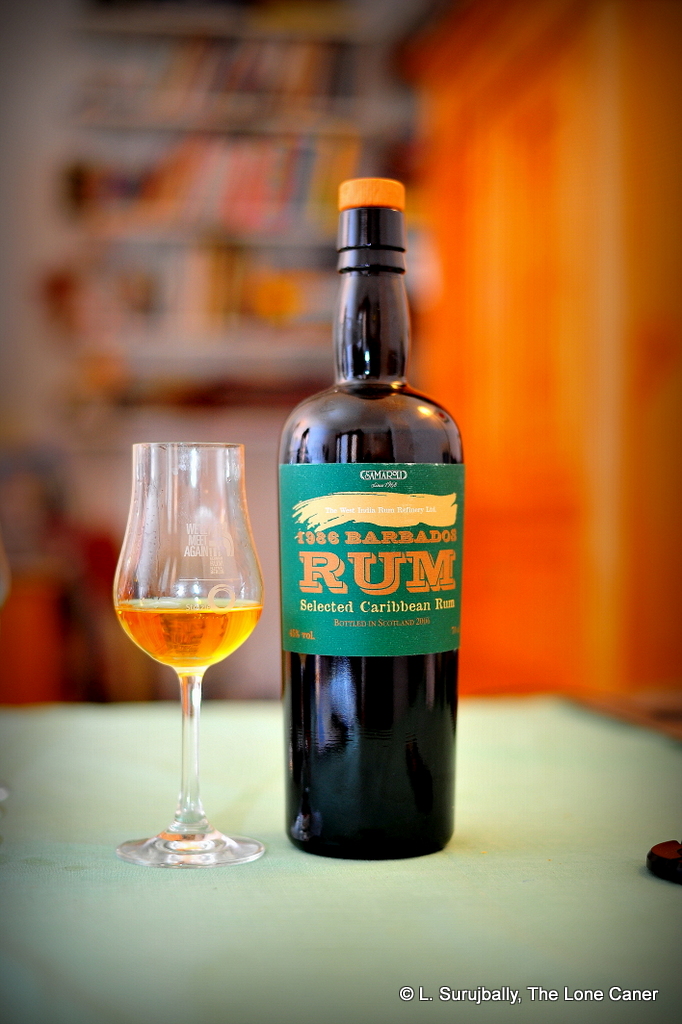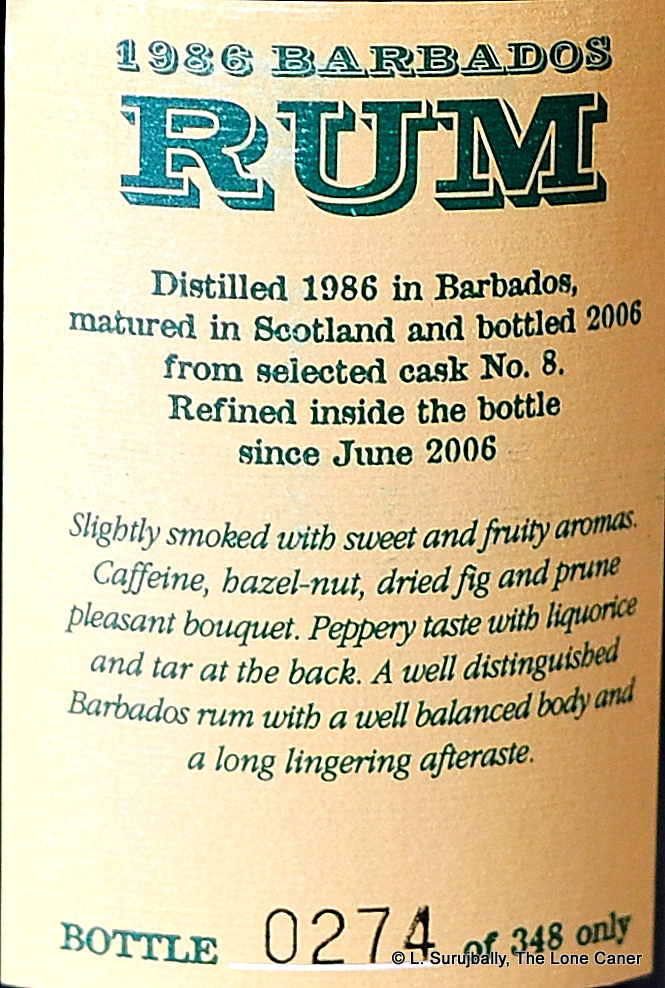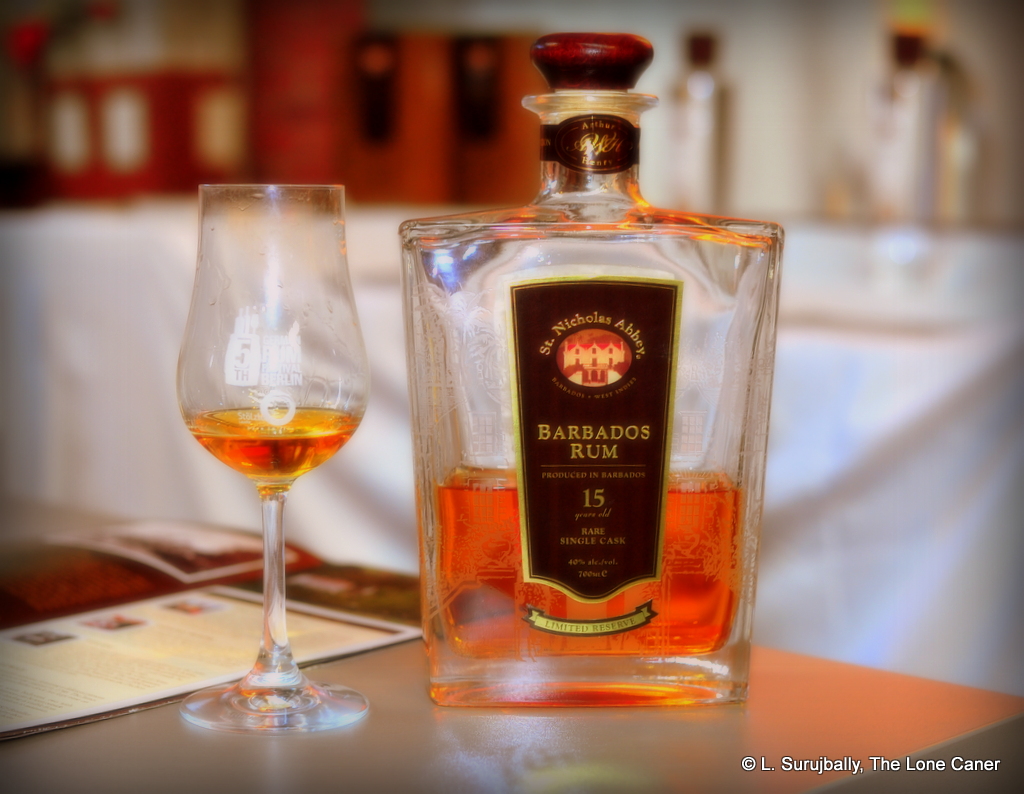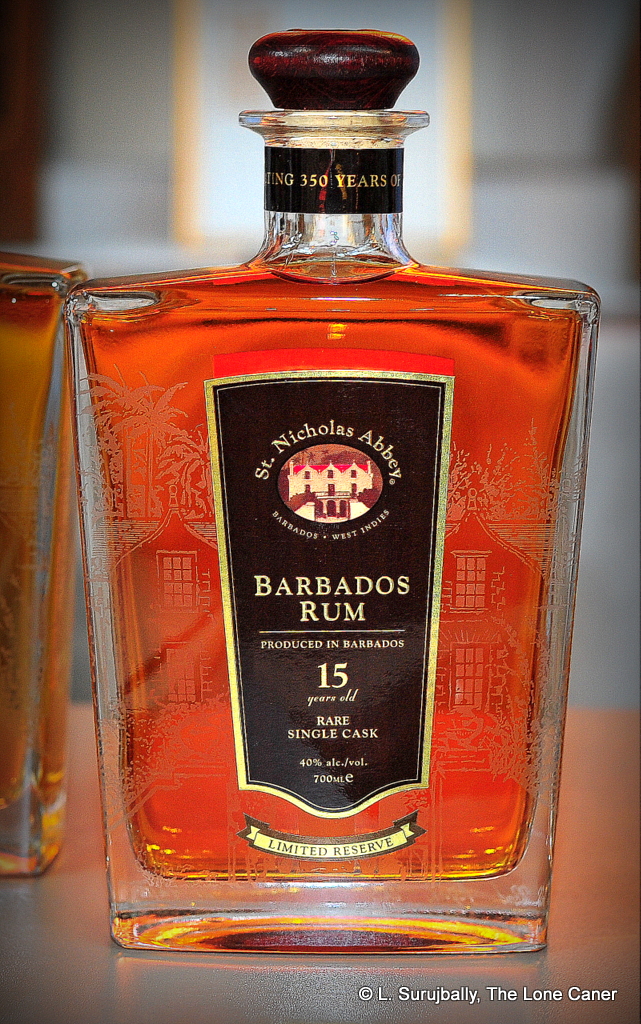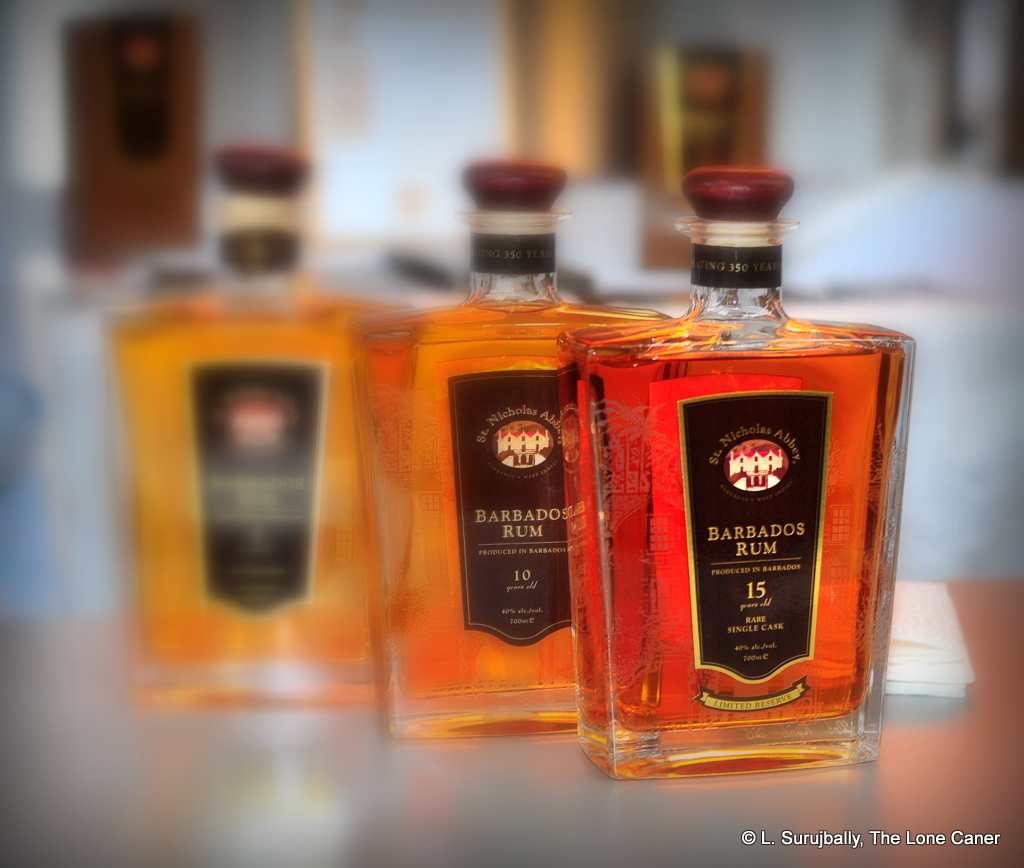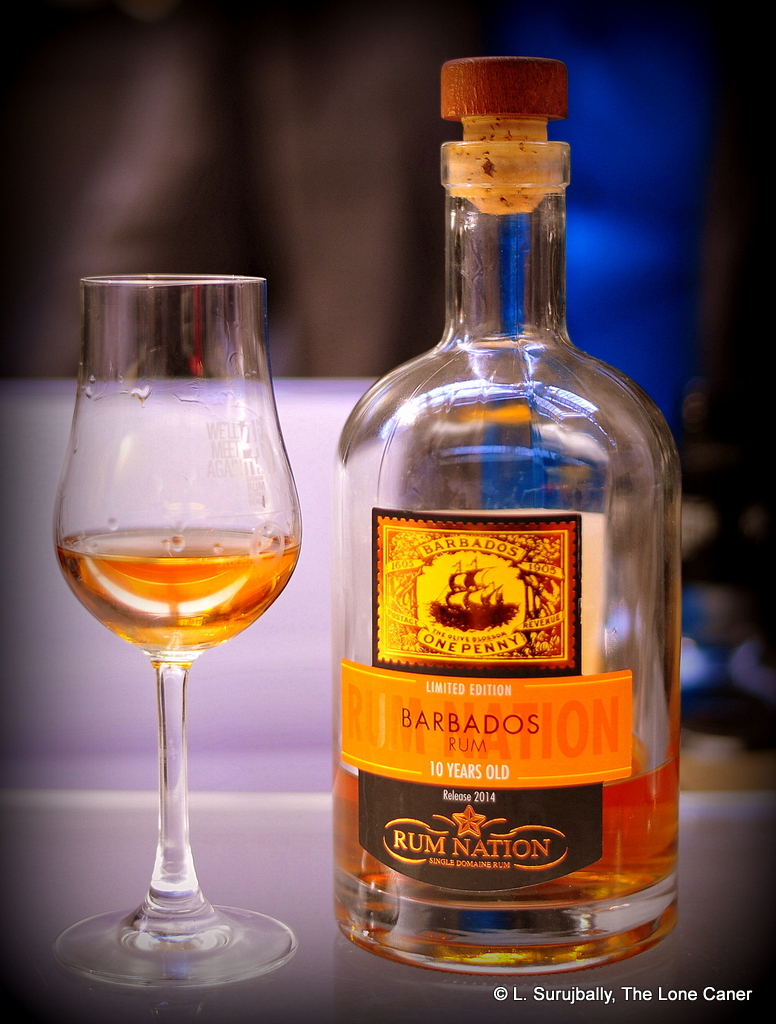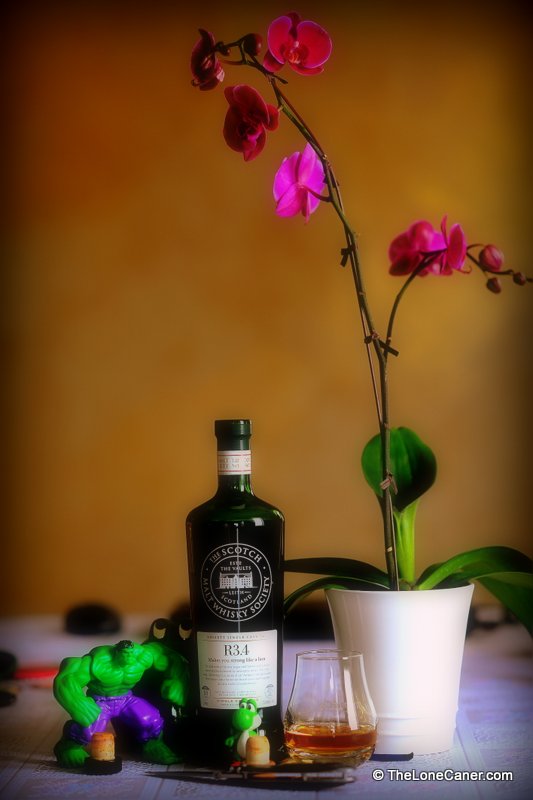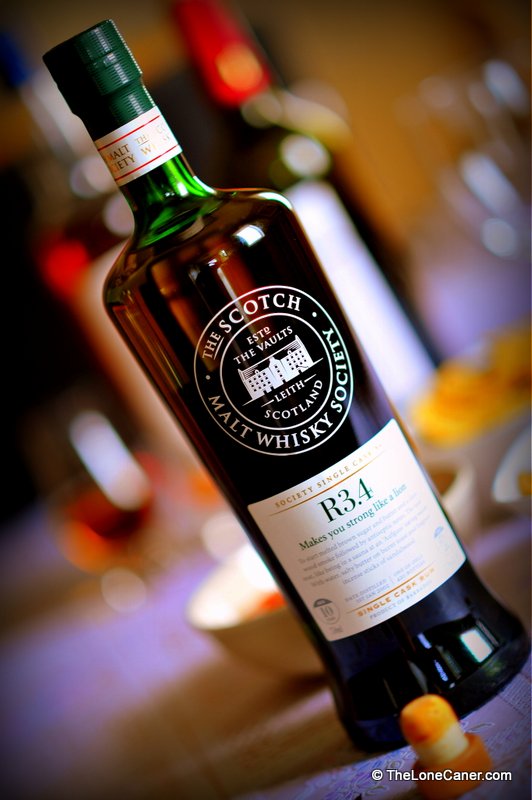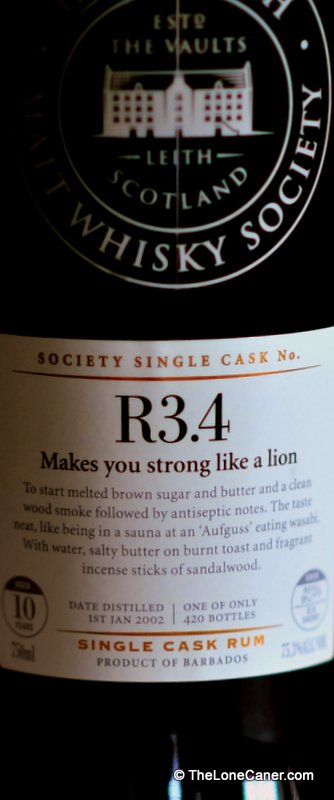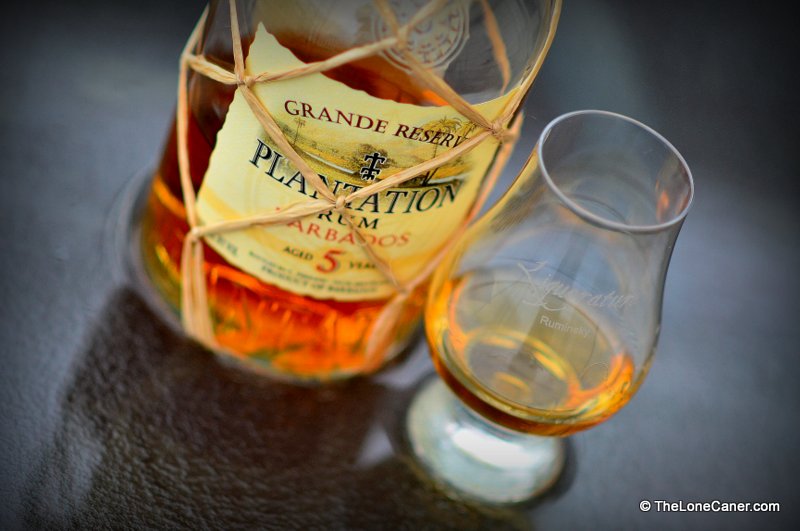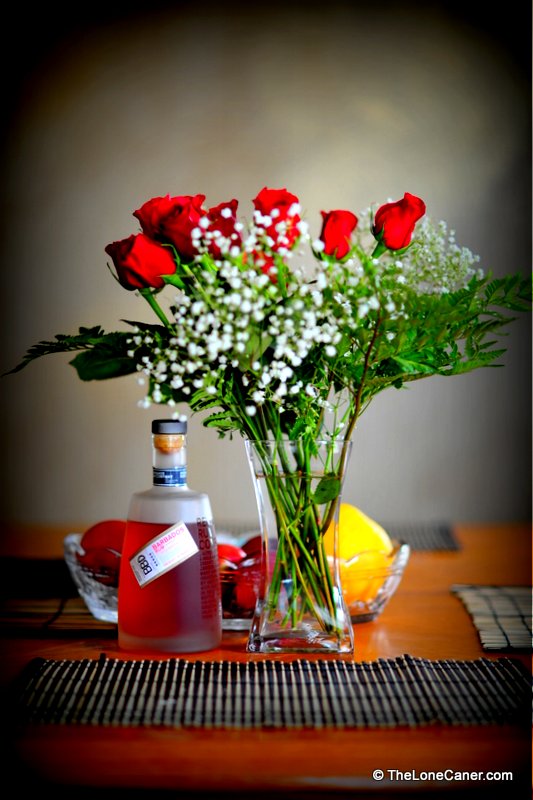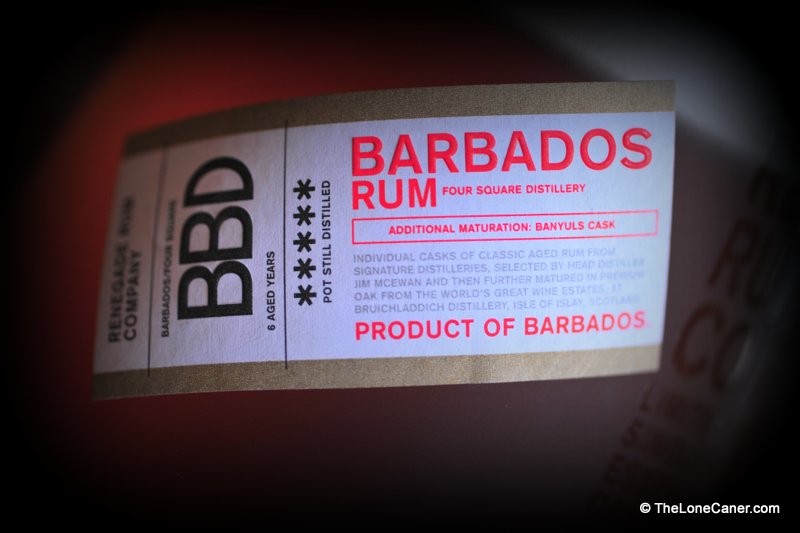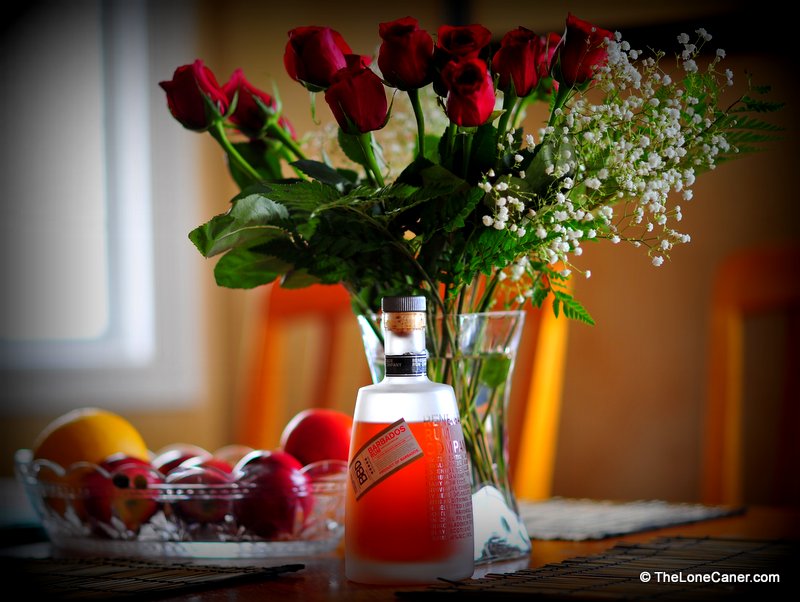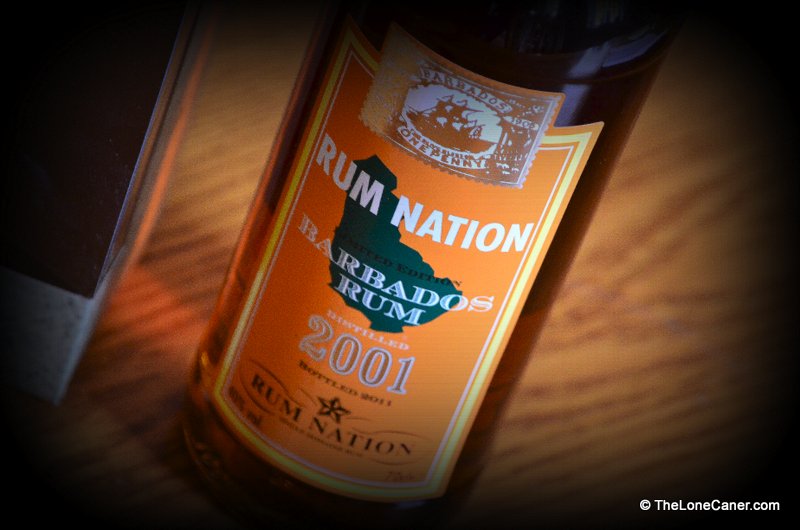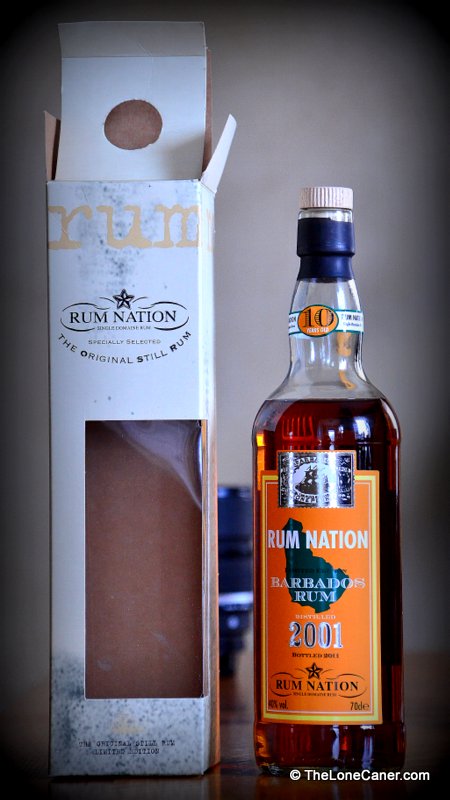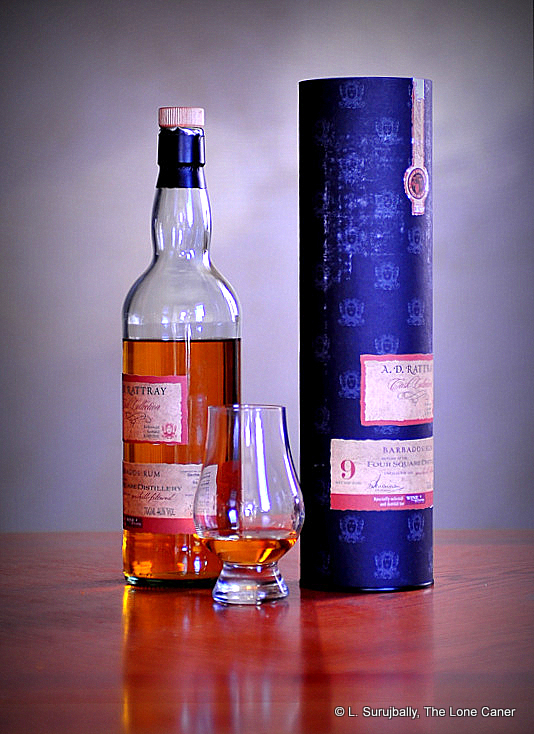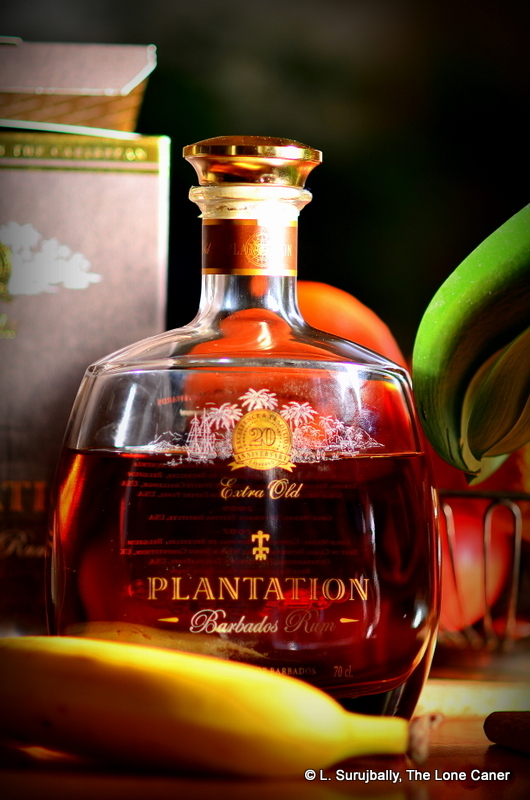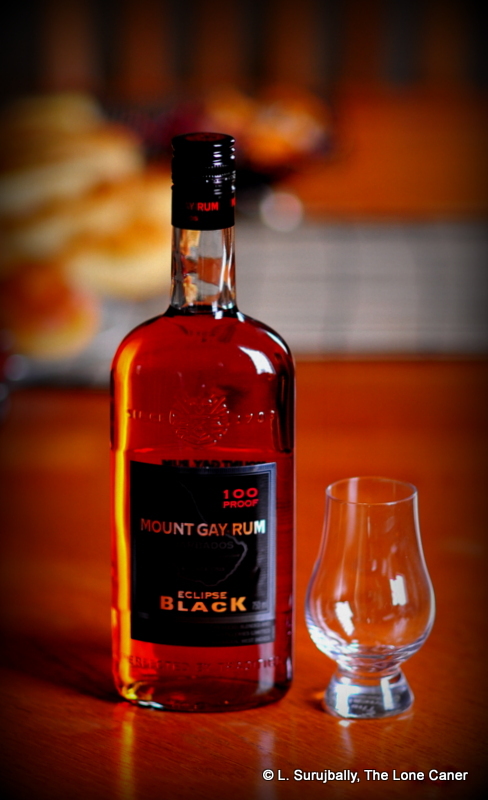#388
Marco Freyr, in between his densely researched articles on Barrel-Aged-Mind, indulges himself with tasting independent bottlers’ wares, all at cask strength. Marco does not waste time with the featherweight Bacardis of this world – he goes straight for the brass ring, and analyzes his rums like he was a Swiss watchmaker looking for flaws in the Vacheron Constantin Reference 57260. Some time back he shipped me some Bajan fullproofs – being amused, perhaps, at my earlier work on Mount Gay’s XO, and feeling I should see what others did with their juice, both now and in the past. This is not to diminish Richard’s or the Warren’s output – yeah, right – simply to call attention to decent rums made elsewhere on the island, which was the same line of reasoning behind my writing about the Banks DIH rums from Guyana to contrast against the DDL stuff.
Anyway, in that vein here’s the second of a few full proof rums from Little England I want to run past you. This one is also from Cadenhead — not one of their M-for-massive iterations that knock you under the table and leave the weak-kneed trembling and crossing themselves, but from the Green Label collection. A 2000-2010 ten-year-old bottling, issued at a relatively mild 46% and therefore much more approachable by those who prefer standard-proof rums. I’m not always a fan of the Green Labels – their quality is inconsistent, as the Laphroaig-aged Demerara implies and the 1975 Demerara emphatically refutes – but there aren’t that many Bajan rums out there made by the indies to begin with (aside from Foursquare’s juice), so we should take at least try one or three when they cross our path.
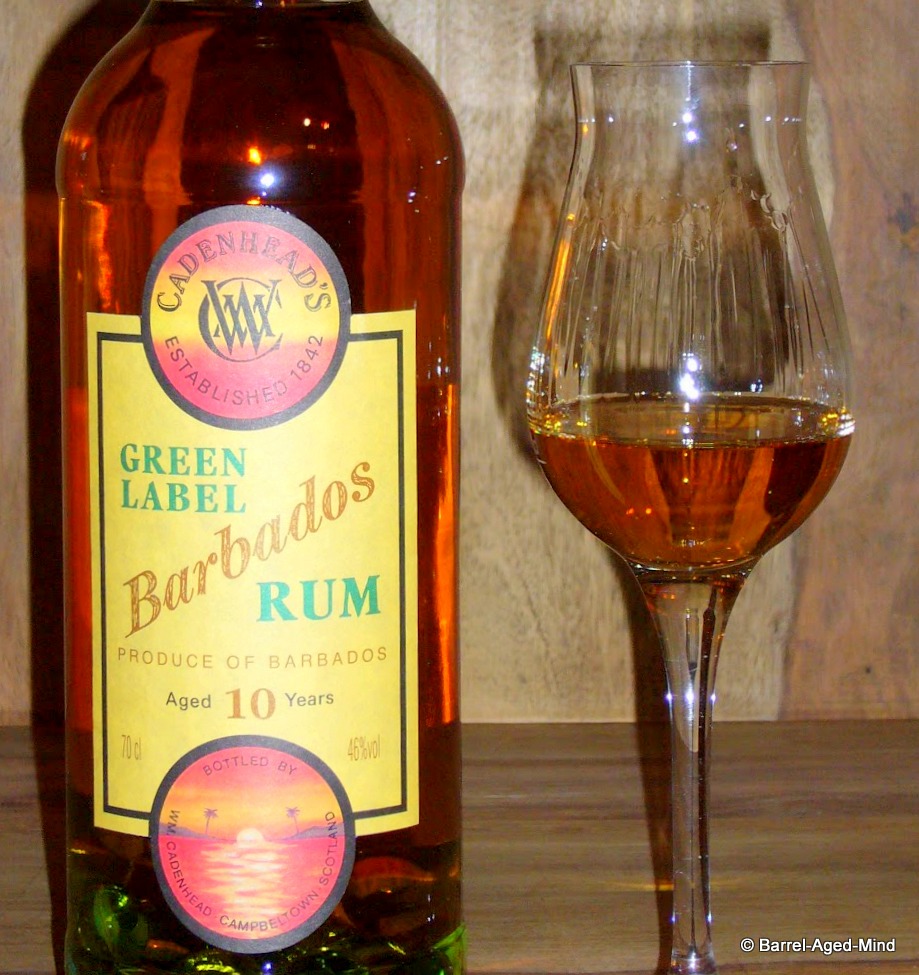 Nose first: for a ten year old aged in Europe, it was quite fruity and sweet and the first smells that greeted me were a mild acetone, honey and banana flambee, with spices (nutmeg and cloves), some fruitiness (peaches, pears) and caramel. Allowing for the difference in power, it was similar to the BMMG we looked at last week, though its nasal profile whispered rather than bellowed and lacked the fierce urgency that a stronger ABV would have provided. The fruits were overtaken by flowers after some minutes, but throughout the tasting, I felt that honey, caramel and bananas remained at the core of it all, simple and distinct.
Nose first: for a ten year old aged in Europe, it was quite fruity and sweet and the first smells that greeted me were a mild acetone, honey and banana flambee, with spices (nutmeg and cloves), some fruitiness (peaches, pears) and caramel. Allowing for the difference in power, it was similar to the BMMG we looked at last week, though its nasal profile whispered rather than bellowed and lacked the fierce urgency that a stronger ABV would have provided. The fruits were overtaken by flowers after some minutes, but throughout the tasting, I felt that honey, caramel and bananas remained at the core of it all, simple and distinct.
To some extent this continued on the tasting as well. With a strength of 46% the Green Label didn’t really need water, as it was light and warm enough to have neat (I added some later) and the golden rum didn’t upend any expectations on that score. It was initially very sippable, presenting both some brine and some caramel sweet right away, right up to the point where – what just happened here? – it let go a series of medicinal, camphor-like farts that almost derailed the entire experience. These were faint but unmistakeable and although the subsequent tastings (and water) ameliorated this somewhat with green tea, a little citrus, more honey, caramel, and chocolate, it was impossible to ignore completely. And at the close, the 46% resulted in a short, breathy finish of no real distinction, with most of the abovementioned notes repeating themselves.
I’ve had enough Foursquare rums, made by both them and the independents, to believe that Marco was correct when he wrote that he doubted this rum was from them, but instead hailed from Mount Gay – much more than Doorly’s or Rum66 or the more recent FS work, it shared points of similarity with the Cadenhead’s BMMG cask strength as well as the 1703 from Mount Gay itself. And like him, I thought there was some pot still action coiling around inside it, even if Cadenhead obdurately refused to divulge much in the way of information here.
At the end, though, whatever the source, I didn’t care much for it. With the BMMG I remarked it was too raw, perhaps too strong for its (continental) ageing and could use some damping down, a lesser strength – not something I say often. Here, to some extent the opposite was true: it was mild and medium-sweet, floral and fruity and had it not been for that blade of medicine in the middle, I would have rated it quite a decent Bajan rum, a credit to Mount Gay (if not entirely rivalling the 1703). As it was, combined with the overall lack of punch and depth, it finishes as a rum I’d not be in a hurry to buy again, because it’s too deprecating to qualify as a fullproof bruiser and the taste doesn’t take up enough of the slack to elevate it any further.
(82/100)
Marco’s unscored 2012 German-language review, from the same bottle as the sample he sent me, can be found on his wesbite, here.
